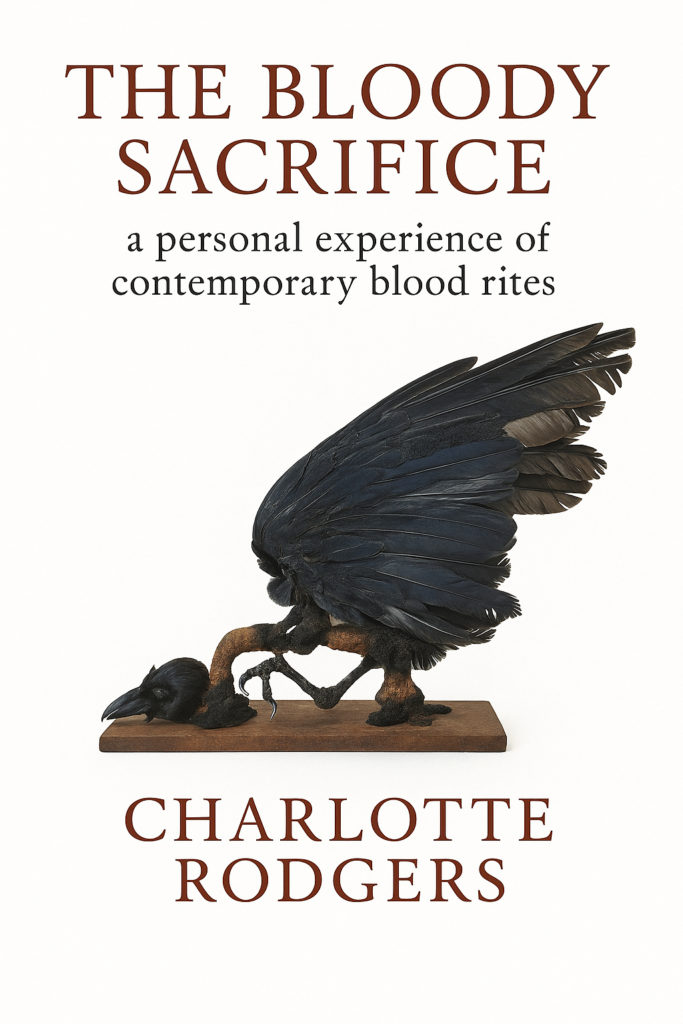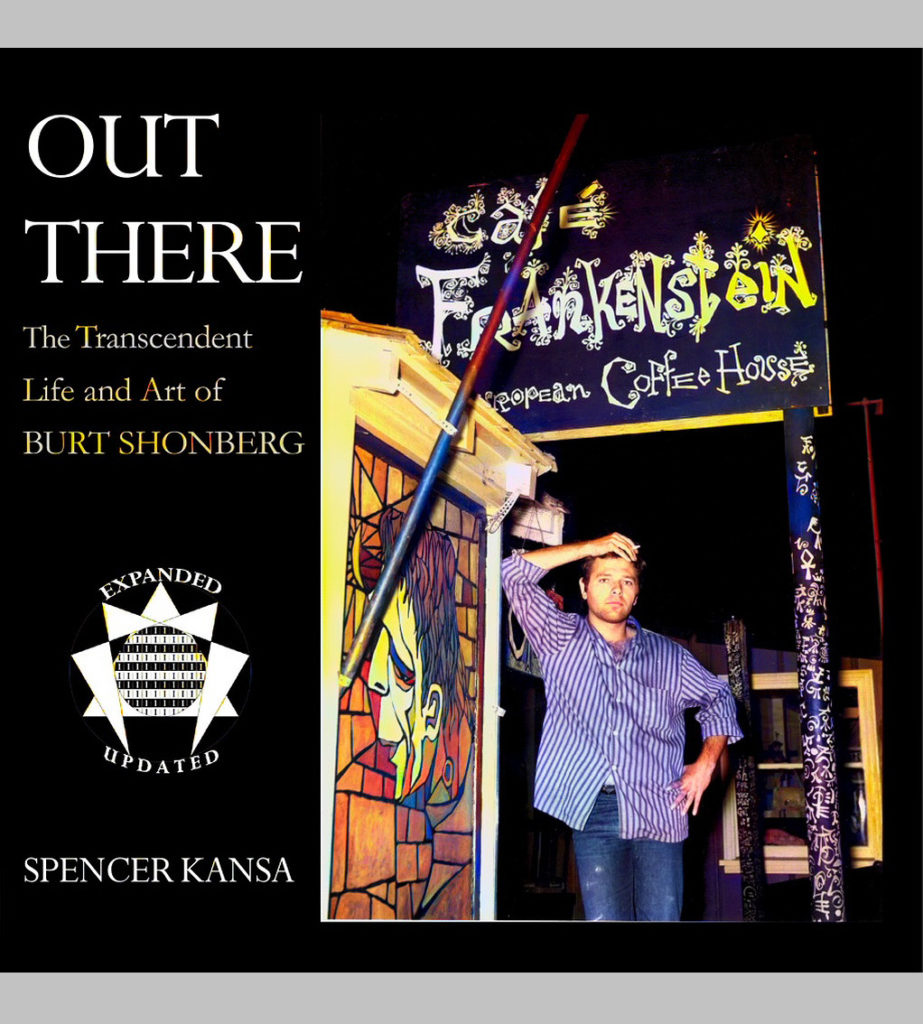
Tag Archives: art
THE BLOODY SACRIFICE
Pagan Heart of the West V
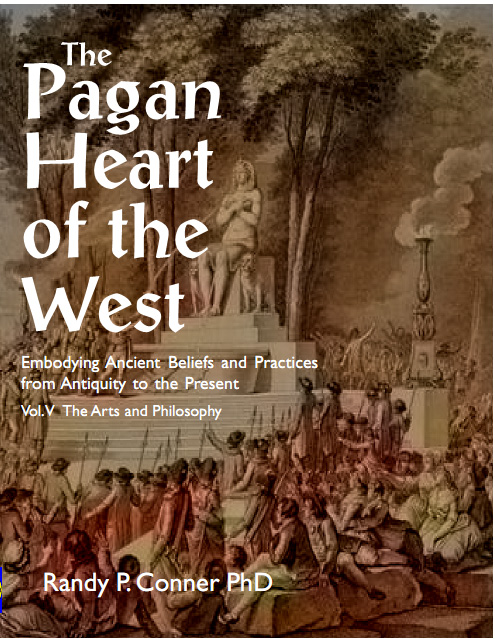
The Pagan Heart of the West:
Embodying Ancient Beliefs and Practices
from Antiquity to the Present
Vol. V The Arts and Philosophy
Randy P. Conner PhD
ISBN 9781906958909
£20.00+p&p /$28.00+p&p
Click HERE for UK edition
Click HERE for USA & Elsewhere
Get Pagan Heart of The West Quartet for only £65.00 postage free / UK
Get Pagan Heart of The West Quartet for only $100.00 postage free / USA (Elsewhere check fd)
In this fifth and final volume, we consider the persistence and transformation of pagan traditions in philosophy and the arts. This final volume also includes the extensive bibliography for the series.
The Pagan Heart of the West challenges current academic notions that paganism died when Christianization occurred; that the transition from paganism to Christianity was a fairly easy, nonviolent one; that persons once pagan were happy to accept the new religion because it fulfilled them or because they viewed it as superior – as if the Inquisition never happened; and that all things pagan are Christian before the mid-twentieth century, even though they demonstrate little or no connection to the Christian New Testament. Likewise, Pagan Heart challenges narrow conceptions of “the West.”
Applying Indigenous and decolonial theories, together with Michel Foucault’s conception of subjugated knowledge, Pagan Heart suggests that instead, paganism should be explored as an ancient and indigenous set of common beliefs and practices, at once ubiquitous and local, that includes the reverence of deities; the veneration of nature; rites celebrating the seasons and the life cycle; practices of healing, divination, and magic, often guided by ritual specialists; and arts and philosophies giving expression to pagan figures, concepts, and narratives.
Pagan Heart focuses on the utilization of theories that contest absolutist language supporting the so-called death of paganism; and on the worship and veneration of ancient deities and kindred beings. Like the other volumes, this volume demonstrates that paganism has not only persisted throughout millennia but that it has also undergone metamorphosis and innovation.
Most importantly, Pagan Heart emphasizes that the ancient gods did not die when Christian authorities forbade their worship and sought, in N. Scott Momaday’s terms, to commit deicide, but instead that they continue to exist and thrive.
Randy P. Conner, Ph.D., is the author of several works on the intersection of gender, sexuality, mythology, and the sacred. He teaches Humanities, including World Mythology, in the Chicago area.
Drawing in Real Perspective
Featured
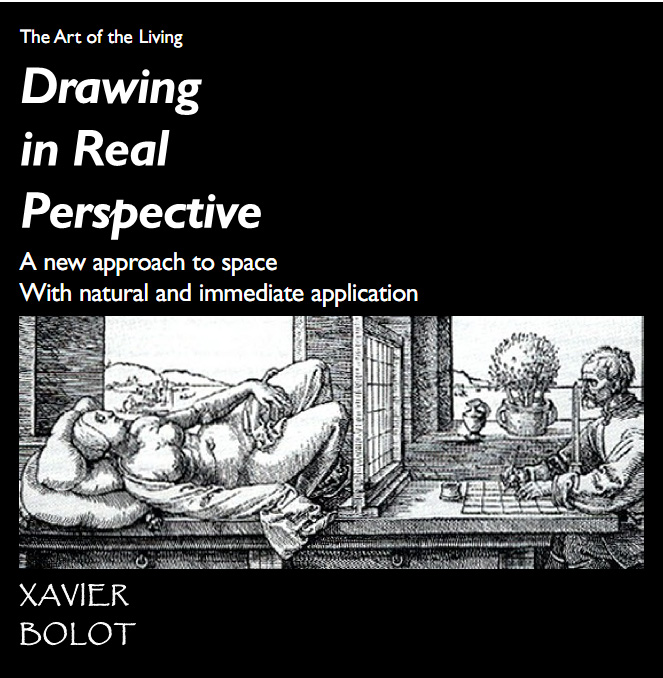
Drawing in Real Perspective
A new approach to space with natural and immediate application
Xavier Bolot
Format: Softcover/244pp
ISBN: 8781906958770
£14.99/$22
Subjects: Art/Art History/Art Theory/Drawing/Painting.
In this book we learn how to draw using a natural technique that is amazingly efficient and simple. Real Perspective is a new approach to space as seen by our eyes.
Perspective is an integral part of drawing and painting. It is however poorly understood today. Our representation of perspective in western countries dates from the 17th century, enforced by an edict made by Louis XIV despot of France. It consisted of drawing receding straight lines starting from a vanishing point.
However, the ancient Greeks used specific curves. This heritage was not taken up during the Renaissance.
In an investigative atmosphere, this book unmasks beliefs we received on the Renaissance and our contemporary culture. We learn to believe what we see, using a natural technique that is amazingly efficient and simple.
We rediscover again the Greek knowledge, and the researches among others of Leonardo da Vinci, Henri Matisse and David Hockney.
Buy UK edition
Buy US edition
Pan’s Daughter
Featured
The Magical World of Rosaleen Norton
Revised and Greatly Expanded Edition
Nevill Drury

Pan’s Daughter
The Magical World of Rosaleen Norton
(Revised & Greatly Expanded Edition)
Nevill Drury
Format: Softcover/326 pp/48 illustrations.
ISBN: 978-1-906958-41-1
£22.99/US$32/AUD$36(+$8p&p)
Click Here for Pan’s Daughter / USA
Click Here for Pan’s Daughter / UK
Click Here for Pan’s Daughter / AU
During the 1950s and early 1960s the Sydney-based trance-artist and Pan-worshipper, Rosaleen Norton, was well known in Australia as ‘the Witch of Kings Cross’ and was frequently portrayed in the tabloid press as an evil ‘devil-worshipping’ figure from the red-light district. Norton attracted attention from both the public at large and also the local police for engaging in bizarre pagan sex-rituals with her lover, the poet Gavin Greenlees. Details of these activities would surface from time to time in the local courts when Norton was defending her metaphysical beliefs and seeking to defuse claims that her magical paintings and drawings were obscene. Norton was also associated with the scandal that eventually engulfed the professional career of renowned musical conductor, Sir Eugene Goossens who had arrived in Australia in 1947 and became a member of Norton’s magical coven six years later.
Norton dedicated her magical practice to the Great God Pan and to a lesser extent Hecate, Lilith and Lucifer. She was also intrigued by the visionary potential of Kundalini yoga, out-of-the-body trance exploration and Aleister Crowley’s Thelemic sex magick and combined all of these elements in her ritual activities.
Pan’s Daughter is the only biography of Rosaleen Norton and provides the most detailed and authoritative account of her magical beliefs and practices. First published in Britain by Mandrake in 1993, it is now reissued in a revised and expanded edition.
“Brilliantly researched…outrageous and inspiring”
Fiona Horne, author of Witch – A Personal Journey and Witch – A Magickal Year
“A fascinating study. Drury’s understanding of the occult and spiritual realms makes Norton’s art and life comprehensible” Tom Thompson, Sydney Morning Herald
Dr Nevill Drury (1 October 1947 – 15 October 2013) is best known for his publications on modern Western magic, shamanism and visionary art. For many years he worked in the Australian book industry as an editor and art book publisher and in 2008 he received his Ph.D from the University of Newcastle for a dissertation on the art and magical belifes of Rosaleen Norton.
Surrealism & The Occult
Featured
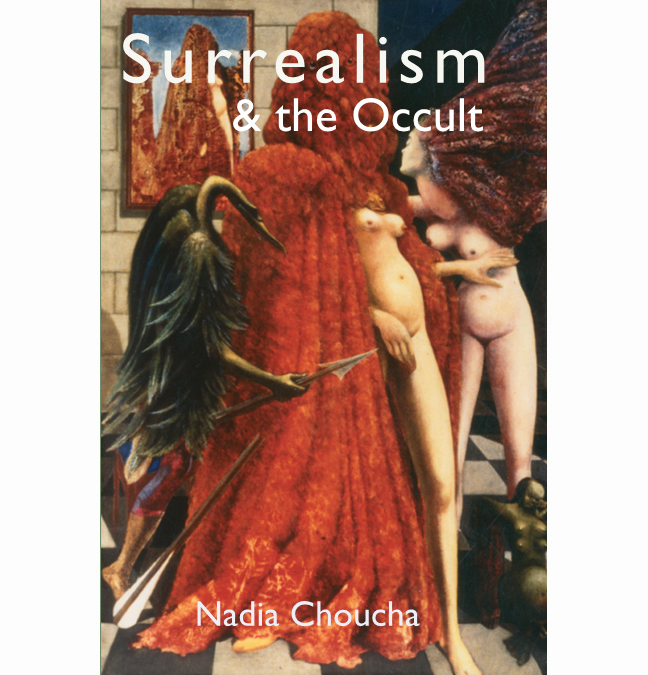
Surrealism & The Occult
Nadia Choucha
Format: Softcover/164 pp.
ISBN: 9781906958749
£15.00
Subjects: Art/Art History/Surrealism/Occult.
Click HERE for the UK edition
Many people associate Surrealism with politics, but it was also permeated by occult ideas, a fact often overlooked by art historians. This occult influence goes beyond general themes to the movement’s very heart.
This occult influence goes beyond general themes to the movement’s very heart. The antinomian stance of Surrealism can be traced directly to the influence of radical nineteenth century magi such as Eliphas Lévi, whose Dogma and Ritual of High Magic was widely read by Surrealism’s ideologues. Amongst these we find its progenitor André Breton.
The book shows how many Surrealists and their predecessors were steeped in magical ideas: Kandinsky, with his involvement with Theosophy, the sorcery of Salvador Dali; the alchemy of Pablo Picasso and the shamanism of Max Ernst and Leonora Carrington.
Surrealism did not establish itself in Britain until the 1930s but a select few felt something in the air. Almost ten years before the Surrealist experiments with automatic drawing, an obscure English artist, Austin Osman Spare had perfected the technique.
Nadia Choucha shows, convincingly, that occult and surrealist philosophies were often interchangeable. Surrealism and the Occult is seminal reading for art historians and occultists alike, while artists will find it a vital guide to the unlocking of the imagination.
Praise for Nadia Choucha’s Surrealism & the Occult
”Highly readable…seminal… fascinating” – Francis X. King
”alive, with the heady mixture of occult and pictorial symbolism treated with laudable lucidity.”- Art Book News
Ithell Colquhoun
Featured
pioneer surrealist artist, occultist, writer and poet
(reprinted)
Eric Ratcliffe
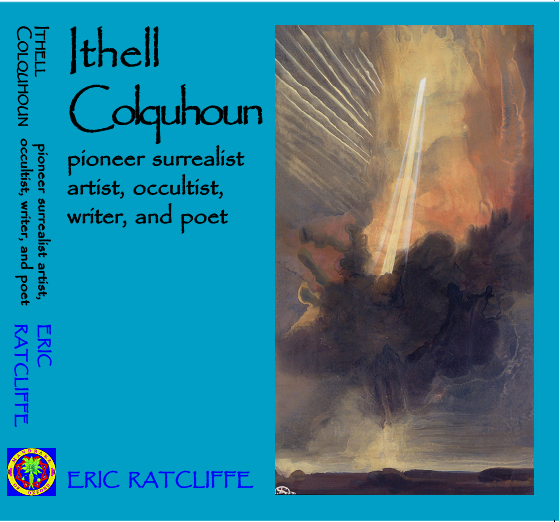
——————————————————————-
Ithell Colquhoun / UK / £30
——————————————————————-
Ithell Colquhoun / USA / US$40
——————————————————————-
Ithell Colquhoun
pioneer surrealist artist, occultist, writer & poet
Eric Ratcliffe
Format: Softcover/312pp/90 illustrations (25 colour).
ISBN: ISBN 978-1869928-98-8
£30/US$40
Subjects: Art/Art History/Surrealism/Occult/Magick/Biography.
–
The skills of Ithell Colquhoun in her main practice, that of artist and pioneer in this country of surrealistic art, have been long recognised. Additionally, other interests – alchemy, Earth-magic, active occultism, poetry, druidism, the pre-Christian pagan calendar, the history and membership of the Golden Dawn – and writing of and involvement in these interests by book publication and in a widely scattered field of correspondence, have created a miscellany of truly gargantuan proportion.
Eric Ratcliffe considered it was time to get together some of these pieces, to add something of what is known of Colquhoun’s early life and family history and to take the opportunity of listing a comprehensive calendar of her work and exhibitions. The result is neither strictly biographical nor a treatise on any one subject, but it is a first gathering of the roots, passions and multi-directions of this artist. It is a patchwork containing many launch-pads for exploration of the magical and mythical atmosphere which this artist existed in and created. Here therefore is a contribution towards solving a jigsaw and a wind-catch of the minor cyclones of lthell’s dedicatory interests, also serving as a record of her accomplishments in the art field.
REVIEWS
‘The subtitle of this book is: ‘Pioneer Surrealist, Artist, Occultist, Writer and Poet’, this multifaceted description captures the essence of who and what Ithell Colquhoun was about. Her connection to Cornwall is through the book The Living Stones, published in 1957, which was an early contribution to discovering the power of the Cornish landscape, prehistory and tradition and folklore. Even today, it continues to inspire people with its love for the ancient land of Cornwall…Ratcliffe’s biography made me want to go back and re-read The Living Stones, and no better thing could be said of a book such as this.’- Cheryl Straffon, Editor in Meyn Mamvro – Ancient stones and sacred sites in Cornwall – www.meynmamvro.co.uk
‘The author gives an excellent account of Colquhoun’s artistic career, explaining why she has been so overlooked (she stuck to her principles against the authoritarian demands of the British surrealist clique and consequently was expelled). Ratcliffe places proper emphasis upon the artist’s magical activities. She was a member of the OTO, Order of the Pyramid and Sphinx, Order of Holy Wisdom, Ancient Celtic Church and the Druid Order.
Despite having had the good fortune to read many of Colquhoun’s magical papers I learnt a great deal from this very well informed work. There is excellent bibliographical information including listings of unpublished typescripts and also as comprehensive as possible listing of her paintings and drawings.’
Ithell Colquhoun by Eric Ratcliffe, Mandrake of Oxford.
Reviewed by Ben Fernee @ Caduceus Books
‘Ithell Colquhoun was a pioneer surrealist artist, poet, writer, pantheist and occultist. Descended from Devonian ancestry, she was of Anglo-Indian birth and received her education in England at the Cheltenham Ladies College and later at the Slade School of Art in London.
After the war she moved to Cornwall where she spent the rest of her life. While at the Slade she became involved in Theosophical circles and then attempted, without success, to join Moina Mathers’ Alpha and Omega Lodge of the Hermetic Order of the Golden Dawn and Dion Fortune’s Fraternity of the Inner Light.
However during the 1950s she belonged to various occult groups including Kenneth Grant’s Typhonian OTO and Nu-Isis Temple, Dr WB Crow’s Order of the Holy Wisdom and Order of the Keltic Cross, Tamara Bourkhoun’s Order of the Pyramid and the Sphinx, as well as the Druid Order, the Cornish and Breton Gorsedd, the Ancient Celtic Church, Co-Freemasonry and the Fellowship of Isis.
This biography is profusely illustrated with many of Colquhoun’s paintings and also includes some of her writings and poetry. It is a fascinating study of a unique multi-talented woman who during her creative life contributed a great deal to both the artistic and occult fields. Recommended.’
Ithell Colquhoun, by Eric Ratcliffe.
Reviewed by Mike Howard in The Cauldron, issue 129, August 2008
P is For Prostitution
Featured
An A-Z of a harsh life survived
Charlotte Rodgers
Illustrated by Ruth Ramsden
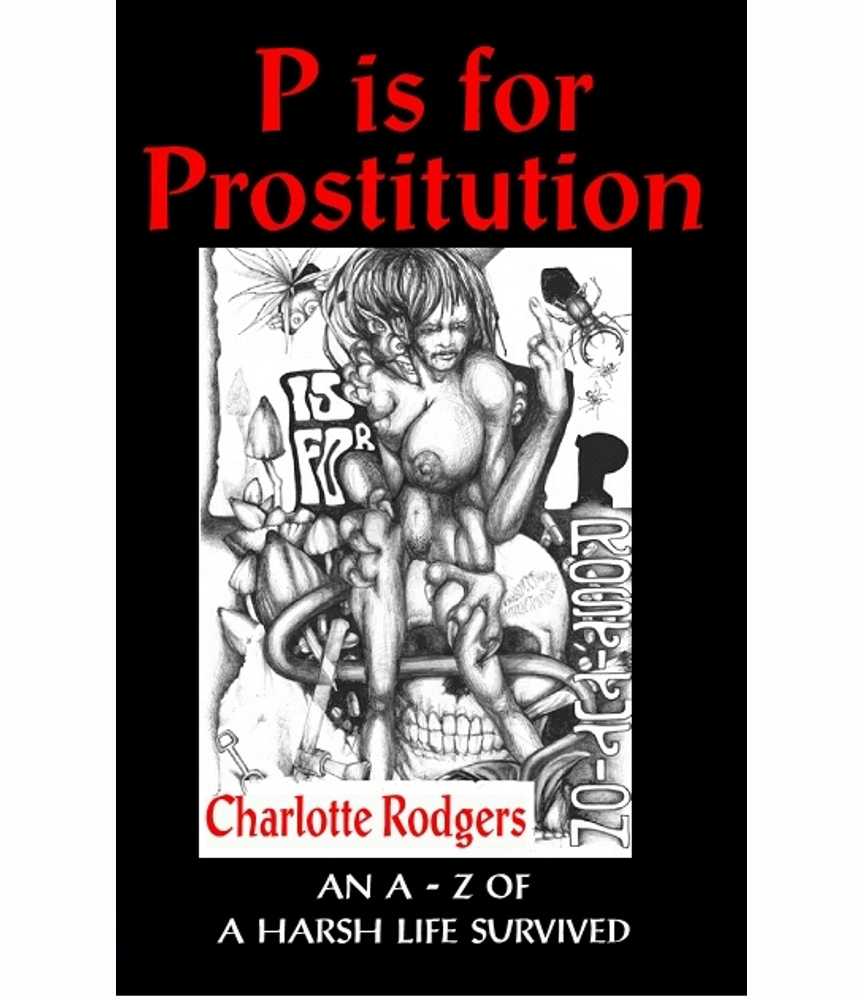
P is for Prostitution
An A to Z of a harsh life survived
Charlotte Rodgers
ISBN: 978-1-906958-26-8
£15.00 +P&P /US $24.00 +P&P
Click HERE for UK
Click HERE for USA & AUS
Click here for Kindle UK Edition
Click here for Kindle USA Edition
P is for Prostitution is a primer unlike any you will have read before, the ABC approach far from simplistic. Through various episodes the author charts her own insights into addiction and the kind of existence that inevitably goes with this. Each letter marks a step on a journey into the lowest circles of hell in which the “author’s creativity and intellect is misdirected towards a chaotic, nihilistic and devastating existence” (reader’s foreword). There are moments of black comedy, sexual horror, and final, uneasy redemption in which the author reclaims the trajectory of her life.
“. . . the life you lived . . . represents the era you grew up in and the position of women in society and the rules they were expected to live by and the consequences of breaking these rules. Women are often regarded as objects, possessions and are expected to be submissive.” (Jane Hunt)
P is for Prostitution grew out of the author’s exploration of death and ancestral cults. It led her to acknowledge her own past, re-connecting and rescuing a catalogue of youthful dead or missing loved ones. “This was no surprise given the way we lived our lives at that time, but was no less saddening. Whilst the people concerned were not blood relatives, they were part of who I was and very much my family of choice in our shared inability or refusal to accept the terms of mainstream existence.”
“Daddy was an exclamation mark /
exploding on blank walls /
I was a biblioteque hero /
supporting Atlas’ balls /
Roller skating on Freudian slips /
Pussy footing through the fly leafings/
Of fellow social misfits.”
———————-
“Charlotte Rodgers was born in New Zealand.
Her mother was a war baby, abandoned at the Home of Compassion in Wellington and later adopted by a middle class couple with strong Catholic sensibilities and a desire to do good and moral things; a desire that didn’t encompass compassionate and kind child rearing.
Charlotte’s father was Scottish and from a coal mining family, he escaped this background through self education and by joining the merchant navy, and whilst on leave in New Zealand he met and married Charlotte’s mother.
Charlotte was brought up by two creative, intelligent and unstable individuals whose backgrounds created unhappiness and various manifestations of addictive and compulsive behaviours.
The family constantly moved house, the mother was addicted to a huge amount of pills, the father would regularly ‘run away from home’ and there were many times the only stability in Charlotte’s life was when she was sent to live with her grandmother who was rigidly and violently Catholic.
Charlotte was a shy frightened and introverted child and puberty hit her like the proverbial ton of bricks. At age 15 she made several suicide attempts and was put into psychiatric care to be treated for bulimia, a condition that would stay with her for many years.
She also developed addictions to alcohol and drugs, including heroin, and necessarily worked as a prostitute to fund the habit whilst living a peripheral existence travelling through Australia, Asia and Europe, before settling in England.
After 19 years as an active addict (15 of them as an IV user) she cleaned up with the help of various institutions and agencies, and eventually was able to take the risk to go back to what she always wanted to do; creating art and writing.”
Charlotte is author and editor of The Bloody Sacrifice and
co-editor of The Contemporary Western Book of The Dead, both published by Mandrake.
——————-
Illustrated by Ruth Ramsden
——————–
Daddy was an exclamation mark, exploding on blank walls,
I was a biblioteque hero, supporting Atlas’ balls,
Rolling skating on Freudian slips,
Pussy footing through the fly leafings
Of fellow social misfits.
Well read, intellectually fed neurosis,
Genetically perfected psychosis
Penis Envy
Poison Ivy
Piss and Raving.
Something in the woodshed gave you a fright,
Rumplestiltskin will tell you anytime
Its prick is worse than its bite.
Go-go virgins in discotheque cages
Venus in politically unsound furs
Lectures on the latest psychoanalytical magus
Romulus Remus Oedipus
Sucking dugs like common curs.
Psychoanalyse, disembowel and theorise,
Penis Envy Poison Ivy
Something in the woodshed gave you a fright,
Rumplestiltskin will tell you anytime,
Its prick is worse than its bite.
C.Rodgers 1985
Vowels, Consonants and Other Building Blocks: An Introduction
Several years of exploring and writing about death and cults of the ancestors have led to my putting this, more personal book together. As I looked at how necessary acknowledgement of the past can be to solidify the sense of self, both as an individual and a member of a community; flashes of my own, personal history came back to me. I started to re connect with this and found a catalogue of youthful dead and missing loved ones. This was no surprise to me given the way that we lived our lives at that time, but was no less saddening. Whilst the people concerned were not blood relatives, they were part of who I was at that time. They were very much my family of choice in our shared inability or refusal to accept the terms that mainstream existence at that time offered. I decided to reclaim this time and a lost part of myself, by going back and recording some of my rather erratic recollections.
Initially I was worried that writing this could be self-indulgence or an exercise in personal exploration and poor man’s psychoanalysis that shouldn’t be put out to a wider audience.
However the times and places I lived in, and the way I experienced them, hold things which I believe are core to many who struggle to find their place in this strange world.
Putting such a chaotic mass of events into order could have proved an impossibility until it became apparent to me that my early years were very much about finding a set of rules to live by, thus the subtitle, ‘A Modern Primer’.
Using the alphabet to give order to these memories was a continuation of the primer concept and works well for me. My life was not lived in a straight line and my rather scrappy memory would have rebelled against too linear a form of organisation.
The time span this book encompasses is the 1970s to the 1990s and the backdrop moves between Hong Kong, Australia, London and New Zealand.
This was a time when digital watches were rare and expensive things; China was hard line communist and undeveloped; the Internet was unheard of and there was still a wall dividing Berlin. Graphic novels were on the ascent; only the super-rich had credit cards, and AIDS was just a whisper that could kill in its utterance.
When I was diagnosed with bulimia it was a relatively unknown condition that the medical establishment were unsure how to approach.
I cleaned up as crack was just starting to make its presence known and I was already seeing changes it had made in the junkie community.
Drug using rapidly became even more associated with violence, users burned out much more quickly, if they survived.
When I stopped using drugs I was 30 and considered relatively young in the ‘recovery’ community, but 18 years later I see women burned out by the time they are 15 or 16.
I was one of the first waves of people to go into drug and alcohol rehab, and sad to say the women’s only treatment centre I was in, due to lack of funding, no longer exists.
However the core of the experiences in this book isn’t era specific but is more about one individual’s rather rocky road through her early years.
One thing that I feel I should add.
Readers may find my tone to be detached and even perceive a certain lack of emotion. I was and still am an internalised person, something that may have led to some of my problems over the years.
I look at old photographs of myself and I see a lovely looking girl who seemed locked in her own world. Eventually I couldn’t stay in that private place anymore, despite ever increasing amounts of emotion suppressing drugs. When I left rehab I had a graduation of sorts, a ceremony where I was presented with a butterfly brooch. As I was given my pin, Sister Rosemary who ran the home said that when I arrived at the facility I was like the survivor of a serious car crash; locked in trauma.
Walking away from my car crash life, with its explorations, adventures, and ever increasing horror was when I really started to live.
It was a very different world then, but in many respects, the way we all live and develop has not changed at all.
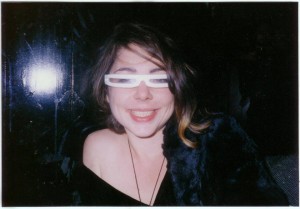
Reader’s Comment
‘P is for Prostitution’ is a personal memoir, which explores episodes and experiences from Charlotte Rodgers’ difficult chaotic life, through her childhood and into early adulthood. At times this book made me feel incredibly sad and much of it was alien to my own comfortable, relatively trouble-free youth. However, her story captivated me and I found myself wanting to find out more about the girl being described. Also, as a woman who grew up during the same decades, I recognized the underlying misogyny of the era and the rules that women were expected to observe. Both Charlotte and her mother suffered in different ways because they were unable to live within narrow definitions of womanhood.
The Primer structure works particularly well and gives the impression of bringing order to a fragmented and chaotic existence. It comments on the nature of individual memory that is not linear and makes connections between disparate incidents and episodes. This form enables the reader to think for herself and reflect on how Charlotte’s childhood and formative experiences affect her situation as she grows up.
Throughout P is for Prostitution, despite the chaos of a life dominated by addictions and illnesses, Charlotte remains a creative and intellectually curious person. Her attraction to similar damaged anarchic souls both as friends and lovers can be seen at various points in her book. Near the end she refers to ‘the person from Porlock’, a debt collector who interrupted Coleridge whilst he was writing Kubla Khan. Charlotte writes, “I feel as if I too had a debt collector knocking on the door of my life, and breaking and permanently redirecting my concentration.” The book conveys a real sense that Charlotte’s creativity and intellect was somehow misdirected at a young age towards a nihilistic and savage existence. It also traces the constant, durable thread of spirituality in her life. This is fascinating given her early encounters with Catholicism.
The book powerfully communicates the devastating effect of physical and mental abuse on Charlotte’s whole family. The suffering her parents endured as children impacts on Charlotte’s life and leads to a lack of stability and security when she is growing up. Charlotte too is terrorized as a child whilst under the ‘care’ of her Grandmother. The sexual repression, religious fanaticism and cruelty that lie behind this abuse are horrifying. Children’s lack of power and the lasting consequences of adult neglect and brutality are recurrent themes.
The reader is able to observe how Charlotte’s eating disorders are caused by a desire to gain some control and how the perception that thinness equals happiness and acceptance actually appears to have almost the opposite effect. This is something that all women can relate to at some level. The book also gave me an insight into addiction and the kind of existence that inevitably goes with it. Her experiences are distinctive but they do reflect the times she lived in and the alternative lifestyle that seemed to be offered by the world of drugs and music. The attraction of losing control and finding a different reality is explored. However, the destructive power of addiction ultimately makes life unbearable.
Charlotte’s discussion of sex in P is for Prostitution is thought-provoking and brave. Her unconventional attitudes and approach made me think hard about the way women are condemned and vilified for sexual transgressions. Moreover, it made me consider how women and children are so often the victims of abuse and the hypocrisy that existed about this when we were growing up and still does to a large extent. Women who transgressed the sexual norms or accepted codes of behaviour were seen as to blame for the abuse they suffered, rather than as victims.
Fundamentally, this is a fascinating articulate and engrossing book. It describes experiences and feelings with which many people, especially women, will identify. I think people will enjoy Charlotte’s honesty and will want to read on and find out how she manages to get through and eventually change her life permanently. Charlotte takes you into divergent worlds, often frighteningly disordered; but the creative, compassionate and intelligent woman that she is today, is always there despite the destructive forces in her early life.
Jane Hunt
Librarian
Somerset
*************************************************************************
A Contemporary Western Book Of The Dead
Featured
An Anthology
Edited by Charlotte Rodgers & Lydia Maskell
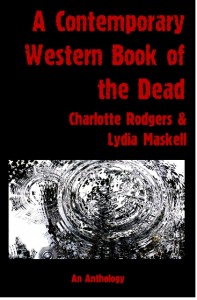
A Contemporary Western Book of The Dead
An Anthology
Edited by Charlotte Rodgers & Lydia Maskell
Format: Softcover
ISBN: 978-1-906958-04-6
£15.00 +P&P / US$22+P&P
Click HERE for UK edition
Click HERE for USA & Elsewhere
Click here for Kindle UK Edition
Click here for Kindle USA edition
‘I was musing on Singapore in all its affluent glory still having shrines for the dead on every street corner during ‘The Festival of the Hungry Ghosts’. Then I was musing on how the socially mobile of modern western society eschew death rites and grieving in the name of ‘holding it together’ and being progressive. I thought of which civilizations are falling and which are rising again, and wondered whether acknowledging death and the ancestors is a vital part of a maintaining personal identity and our place in society. I remember how my grieving father mourned for all the information he had relied on his deceased wife remembering; information which was now lost. I recalled Michael Crichton’s words ‘If you don’t know (your family’s) history, then you don’t know anything. You are a leaf that doesn’t know it is part of a tree.’
Then I thought maybe someone should write about the cults of the ancestors and death, perhaps an anthology, perhaps cross relate experiences of loss to personal spirituality and magick and history. I know that years of working with the dead in the name of art and spirituality, didn’t prepare me for the death of my mother. What helped me was the advice of someone from a long tradition of working with the ancestors. I think that collecting the experiences of spiritual practitioners in their working with grief and death is part of a living and necessary tradition that will give respect to the dead and strength, identity and support to our own personal spirituality.’
Within this book are rituals, stories, traditions and experiences of magicians’ scholars and artists who work with death. Some of the contributors such as Nema, Mogg Morgan, Louis Martine and Nevill Drury (to name but a few) have helped define contemporary transformative spirituality. Others are less well known but just as learned. As there should be in such a collection there is comedy, anger confrontation and practicality. This anthology is about who we are, and where we come from. It is also about how we change. A Contemporary Western Book of the Dead contains voices and visions that acknowledge our past, feed our present and guide the direction of our future.
Introduction/Charlotte Rodgers
Loved One/Nema
All a Do about Death /Josephine McCarthy
Clans For The Memory / Sarah Grimstone
Learning About Death / Nevill Drury
A Thoughtful Wake / Louis Martinie
Break On Through To The Other Side /Louise Hodgson
Death the Final Frontier / Sue Fox
The Bardo Thodol – Bon Voyage / John Power
You Only Live Twice / Ode bi Tola
On Speaking with the Dead: The Cult of the Dead in Traditional Culture / Michael Clarke
Body / Mishlen Linden
The Great Western Hoax / Ode bi Tola
The Book of Gates: A prose arrangement / Mogg Morgan
Biographies of Contributors
Photographers:
Sue Fox, Ruth Kenyon, Ariadne Spyridonos Xenou (Cover: Gerald Hutton)
RADICAL DESIRE
Kink & Magickal Sex
Mark Ramsden & Ruth Ramsden
(Erotica) (Fetish) (Non-Fiction)
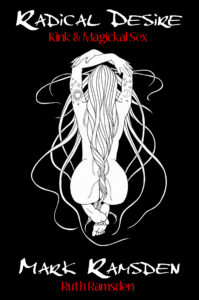
Radical Desire
Kink & Magickal Sex
Mark Ramsden & Ruth Ramsden
Format: Softcover/140pp
ISBN: 978-1-906958-19-0
£15.00 / US$24.00
Subjects: Erotica/Fetish/Tantra/Erotic Art/Non-Fiction
USA & AUS editions
–
RADICAL DESIRE
Re-written with much new material
Completely new illustrations & 3 bonus short stories
“The wit and wisdom of Mark Ramsden’s illuminating text delivers a gripping journey through a rich seam of sexual expression. Read this book, enjoy this book, for it deserves your utmost attention. Over 40? Fat? The style gurus say you’re not sexy, not horny, this book says ‘Bollocks!’ An essential reference work… And bloody good fun too.” – – John Carter
Radical Desire review on Amazon
“This slim (140 pages) book is part brutally honest, unpretentious and often hilarious autobiography, (page 28 is a full page photograph of Mr Ramsden’s pierced penis with the caption “The author making a dick of himself with his eighth Prince Albert upgrade”) part encyclopaedia of fetish (including Piercing, Corsets, Rubber, Switching and Scarification) part tour guide for fetish-loving tourists (“Some say the dungeon play (at Club Rub) is not as extreme as at certain clubs but then I don’t go to a club to see perverts fisting each other. I can get that at home.”) part fine visual art (all illustrations by Ruth Ramsden) and part fiction (2 kinky short stories, here’s an excerpt from “Madam Petra”: Sometime, somewhere, we are always together. Exchanging fragments of dreams and whispered prayers. In the long, slow, sweet dance of desire. Warmed by a pussycat smile.) and entirely satisfying.
”Radical Desire: Kink & Magickal Sex, is not so much a book as it is an experience; one that kinksters, new, experienced, or jaded, should not miss.”
– Madeleine
—
The Author
en.wikipedia.org/wiki/Mark_Ramsden
ALSO BY THE SAME AUTHORS:
The DARK TANTRA TAROT is a synthesis of sex, fetishism and spirituality created by Mark & Ruth Ramsden.
www.darktantratarot.moonfruit.com
Read a review of the DARK TANTRA TAROT on the AECLECTIC TAROT WEBSITE
www.aeclectic.net/tarot/cards/dark-tantra/review.shtml”
BLUE MURDER at THE PINK PARROT
A flamboyant, surreal, stylish, erotic, noir thriller novel by Ruth Ramsden.
Read a sample chapter, read the reviews and get a copy of BLUE MURDER at THE PINK PARROT on www.amazon.co.uk website
www.amazon.co.uk/Blue-Murder-at-Pink-Parrot/dp/1908122242
The Apophenion
A Chaos Magic Paradigm
Peter J. Carroll
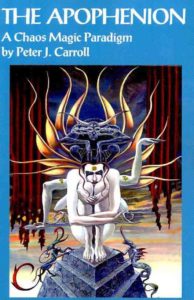
The Apophenion
A Chaos Magic Paradigm
Peter J. Carroll
ISBN: 978-1869928650
Format: Softcover
£15.00 / US$24
Subjects: Chaos Magic
Click HERE for The Apophenion / USA
Click HERE The Apophenion / UK
Click here for Kindle UK Edition
Click here for Kindle USA Edition
From the Author
“My final Magnum Opus if its ideas remain unfalsified within my lifetime, otherwise its back to the drawing board.
Yet I’ve tried to keep it as short and simple as possible, it consists of eight fairly brief and terse chapters and five appendices. It attacks most of the great questions of being, free will, consciousness, meaning, the nature of mind, and humanity’s place in the cosmos, from a magical perspective.
Some of the conclusions seem to challenge many of the deeply held assumptions that our culture has taught us, so brace yourself for the paradigm crash and look for the jewels revealed in the wreckage.This book contains something to offend everyone; enough science to upset the magicians, enough magic to upset the scientists, and enough blasphemy to upset most trancendentalists.”
The Apophenion cover artwork by David Gough www.davidgoughart.com
”Apophenia is the experience of seeing meaningful patterns or connections in random or meaningless data. The term was coined in 1958 by Klaus Conrad,[1] who defined it as the “unmotivated seeing of connections” accompanied by a “specific experience of an abnormal meaningfulness”. Source Wikipedia
Praise for Peter J. Carroll’s works
“The most original, and probably the most important, writer on Magick since Aleister Crowley.” Robert Anton Wilson, author of the Cosmic Trigger trilogy.
“Magicians feared they had lost Him to the world of Theoretical Physics, but Zarathustra has come down from the mountain. The Apophenion is spoken – and proves the wait was worth it. Religion starts the hunt for Meaning, and with science Meaning is killed and served up as Truth. So we need magic, sowing the seeds of Meaning in everyday events, and we need art to cultivate them to public awareness. Thus does Apopheniareveal how to bring back meaning to our diminished lives.” Lionel Snell, Aka Ramsey Dukes, author of SSOTBME.
REVIEWS
THE APOPHENION
by Peter J. Carroll
‘Framed as the outpouring of insight generated by the novel Goddess ‘Apophenia’, Pete Carroll’s new work is a real gem. Coming from a science background, this is his attempt to create a falisfiable model of why the universe looks the way it does, and just why magick can operate successfully.
In the inimitable Carrollian style we have come to know and love, our author sets out to demolish the edifices of being, consciousness, causality, the big-bang and more. In toppling these ontological Titans Pete discovers a universe of panpsychism and intense meaning.
If nothing else this agrees with my own views and is therefore a Good Thing. Pursuing this process through the scientific style of exploration means that quantum physics, special relativity et al show up pretty frequently in the text. If you buy this book expecting lists of planetary correspondence and ritual-by-numbers instructions you’re going to be disappointed.
However this doesn’t mean that this is all physics and no esoterica. Rather the point is that the reading of the universe that the author presents is suffused with magick. (Nevertheless there are some reassuring illustrations of occult entities and one explicit ritual – a rather lovely evocation of the Goddess Apophenia herself).
My reaction in reading this book was one of excitement. The suggestions that Pete advances tickle the mind delightfully. Certainly this isn’t Liber Null. It’s not a manual of techniques but instead concentrates on theory, yet that doesn’t make for a dull read. The theorisation presented here can light the touch paper of a hundred disciplines: cosmology and magick for sure but also Fortean studies, ethnography and especially neuro-biology.
Algebra explodes across the appendices of the book scattering the non-mathematicians towards the Epilogue where things are nicely rounded off in laypersons terms. The truth may well be that we live in vorticitating hypersphere with three dimensional time that, as the author beautifully asserts, “…invites us to become apprentice gods.” The very fact that I can now say ‘vorticitating hypersphere’ and know what that means is a testament to the authors explicatory powers.
The final and perhaps most wonderful thing about The Apophenion is how it demonstrates the development and maturation of Pete Carroll’s earlier writing. If nothing else this stands as a testament to the work of an individual (or perhaps conspiracy of selves!) who’s magick really does seem to work.
Eight chaospheres out of a possible eight!’
– Julian Vayne

